In a scene that’s been playing out across Connecticut over the past week, Diana Colombo lined up at a mobile food pantry in East Hartford on Wednesday morning — a line double its typical length.
Colombo, who is recovering from back surgery, walks with a cane. When she made it to the front of the line, a companion helped her load potatoes, onions, and boxes of macaroni and cheese into a cart.
Normally, Colombo would use her SNAP benefits to buy groceries and supplement that with two pantry visits at the middle and end of each month. Because of the government shutdown, however, that resource is gone. She’s gotten creative, cooking up a pumpkin that Connecticut Foodshare distributed around Halloween, to make a puree for her grandchildren, who live with her. And she’s visiting food pantries three times a week.
“You could cry about it, it’s not going to change nothing,” she said.
An estimated 360,000 Connecticut residents benefit from SNAP, and food pantry directors say they’re working hard to meet the need, with uncertain resources. Enrollees received SNAP benefits through Oct. 31, but have not received new funds since Nov. 1.
Calls to Connecticut’s 211 line also convey the reality in stark terms, with 10 times the number of inquiries about food assistance compared to the same time a year ago, according to the United Way of Connecticut, which runs the help line.
The future of the food assistance program remains uncertain as the longest government shutdown in U.S. history drags on. A federal judge ruled on Friday that the Trump administration must tap reserve funds to replenish EBT cards, but this week the administration sent conflicting messages about whether it would replenish the cards partially or not at all. Connecticut leaders have also sent mixed signals about how they will fill the gap.
Amidst the confusion, pantry lines convey a grim present-day reality: SNAP cardholders are currently not receiving benefits to feed their families.
Sarah Santora, the director of community programs for Connecticut Foodshare, was handing out flyers at the pantry in East Hartford on Wednesday, letting people in line know where other food distribution sites are located. Santoro said that Connecticut Foodshare has noted a 30% to 50% increase in pantry visits across the state, “and in some places much more.”
Santoro said she’s fielding calls at Connecticut Foodshare from people looking for help.
“They’re very, very worried about what they’re going to do if this doesn’t end soon,” Santora said.
In Torrington, Friendly Hands Food Bank Executive Director Karen Thomas said she was trying to maintain a stable amount of food distributed to each household amidst an inundation of new clients, many of whom she described as panicked. The food pantry has cut back on the amount of meat and fish on offer, making it difficult for families to feed their kids a well-balanced diet on mostly shelf-stable items.
“The fresh produce, veggies, things of that nature — those are few and far between.”
At the Midwest Food Bank of New England in Manchester, pantry directors came to collect food to distribute in their communities.
“I’m getting multiple calls every day, people are walking in every day wondering what help they can receive,” said the food bank’s executive director Corey Barrette. “We’re faced with the stark reality that you can’t be everything to everyone. And the further you stretch yourself the less helpful you are to the people you’re trying to help, and that’s a painful place to operate from right now.”
Joan Soucy, the director of the Andover Congregational Church Food Pantry, was visiting the Midwest Food Bank on Wednesday to restock.
“We’re feeling the pinch,” Soucy said. “Our shelves are getting pretty empty.”
In Bridgeport, the Thomas Merton Family Center runs both a food pantry and a soup kitchen.
“There’s lot of anxiety and trepidation about what’s happening now, and how long it’s going to go on for,” said Nicholas Martinez, the direct of the center. “On Friday, we basically ran out of food during lunch, which never happens.”
Martinez said he was seeing a lot of new faces, people who had never needed the center’s resources before, especially families with young children. “It hurts” to see, he said.
Food bank directors emphasized that while donations of food are greatly appreciated, money can allow them to get much more food out to people in need, because they are able to use funds to pay drivers, trucks, gas and other costs toward collecting bulk quantities of donated food.
“With only three paid staff and thousands of volunteers who help us do the work, we can keep our costs really, really low,” Barrette said. “We would never turn food away, but we also want people to recognize that, because of the nature of our operating model, we’re not buying the food that’s out there. We are looking for food that is being donated so we can pick it up at a very low cost and turn around and give it away, and as a result we can stretch the dollar much further.”
Wednesday found state Sen. Saud Anwar, D-South Windsor, at the Midwest Food Bank, pulling donated packets of noodles and cans of beans from a box and sorting them into piles. Dozens of other volunteers were seated around tables, eating a communal lunch, but Anwar abstained. He’s been on a “SNAP Diet” for the past 10 days to raise awareness about the precariousness of Connecticut’s food insecure and has been living on $6.20 of food a day, what an adult would normally get in SNAP funds.
By midday, Anwar had only consumed a cup of tea. He had a banana, apple, and serving of peanut butter waiting for him in his car for lunch — he was trying to delay eating as long as he could. Later, at home, he’d have dinner — likely a combination of rice, beans, and frozen vegetables.
Anwar said that sticking to the $6.20 budget requires him to be strategic. He brings any food he plans to consume during the day with him. He shops carefully to ensure he’s getting some protein and produce in his diet. And he saves his single full meal for the evening.
Anwar said his goal is to raise awareness, posting photos of his meals on Facebook, in hopes people will support the food insecure during this especially precarious time. The irony, of course, is that people who normally receive SNAP benefits don’t even have that $6.20 to spend right now.
“It’s a personal perspective to experience what people are experiencing, and that gives you more empathy and respect, and hopefully the vigor to do more and stand up,” Anwar said. “If that gets some attention, then I can shine light on the real issue that people are experiencing.”
Anwar was quick to acknowledge that his experience was a choice, and therefore inauthentic. “The real experience is what so many people have as a daily reality.”
While the Lamont Administration has given an additional $3 million to Connecticut Foodshare, the state’s largest food bank, to supplement missing food, Anwar said that is merely symbolic.
“We’re not doing enough. I think to have a press conference about $3 million, which will add up to one day or one and a half days of support? It’s more about the press conference than actually doing it. Just roll up your sleeves and fix the issue. People are hungry and we have the resources.”
Josie Reich contributed reporting.
Laura Tillman is a reporter for the Connecticut Mirror. Copyright 2025 @ CT Mirror (ctmirror.org).

 860-533-9343
860-533-9343




 Service Areas
Service Areas























